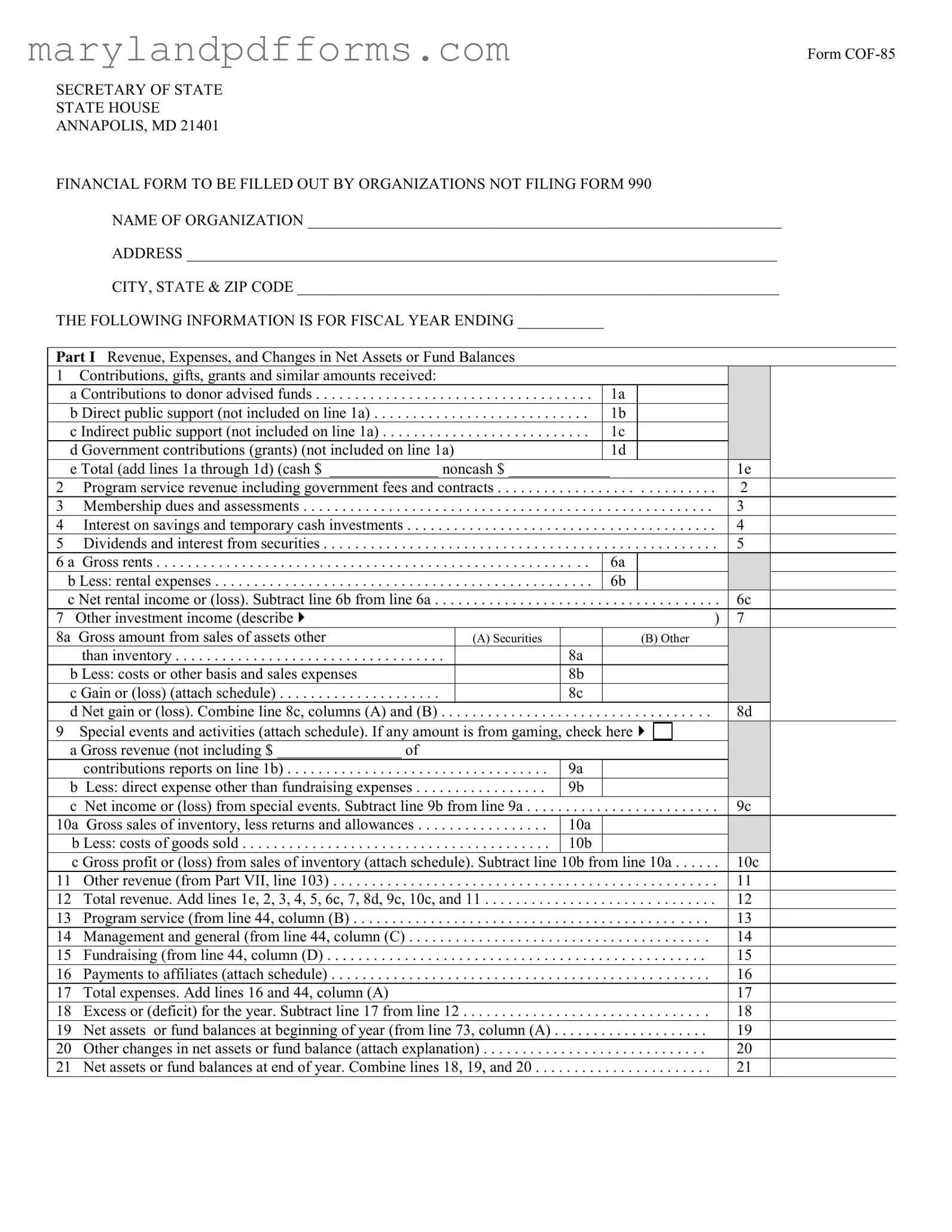The Maryland COF-85 form is a financial reporting document that organizations, which do not file Form 990, must complete. It provides a detailed overview of the organization’s revenue, expenses, and changes in net assets or fund balances for a specified fiscal year. This form is essential for maintaining transparency and accountability in financial reporting.
Organizations that are exempt from filing Form 990, typically smaller non-profits or those with less than $25,000 in gross receipts, are required to file the COF-85 form. This includes charities, foundations, and other non-profit entities operating in Maryland. It is crucial for these organizations to comply with state regulations regarding financial disclosures.
The COF-85 form requires various financial details, including:
-
Total contributions, gifts, and grants received.
-
Program service revenue and membership dues.
-
Expenses related to program services, management, and fundraising.
-
Net assets or fund balances at the beginning and end of the fiscal year.
-
Details about officers, directors, and trustees.
Each section is designed to provide a comprehensive view of the organization's financial health.
The COF-85 form is generally due on the 15th day of the 5th month following the end of the organization’s fiscal year. For organizations with a fiscal year ending December 31, the form would be due by May 15 of the following year. It is important to adhere to this deadline to avoid penalties.
Organizations can submit the COF-85 form either by mail or electronically, depending on the state’s current submission guidelines. If submitting by mail, ensure that all required documents are included and sent to the address specified on the form. For electronic submissions, follow the instructions provided on the Maryland Secretary of State's website.
Failure to file the COF-85 form can result in penalties, including fines and potential loss of tax-exempt status. Additionally, non-compliance may affect the organization’s credibility and ability to receive funding or donations. It is essential for organizations to stay compliant with filing requirements to maintain their operational status.
Yes, if an organization discovers an error or needs to update information after submitting the COF-85 form, it can file an amendment. This typically involves submitting a corrected version of the form along with an explanation of the changes. It is advisable to address any discrepancies promptly to ensure accurate records.
Organizations can seek assistance from various sources, including accounting professionals, legal advisors, or non-profit support organizations. Additionally, the Maryland Secretary of State’s office provides resources and guidance on completing the COF-85 form. It is beneficial to utilize these resources to ensure accurate and compliant submissions.
